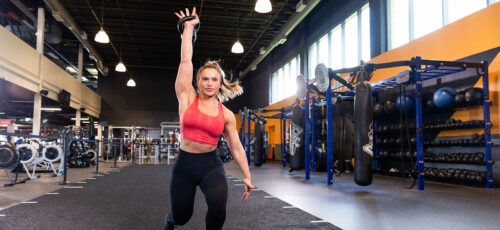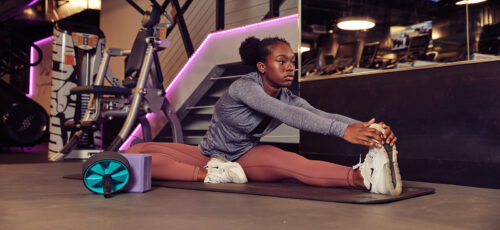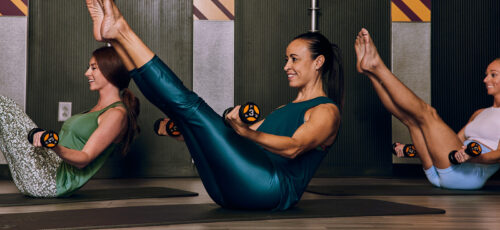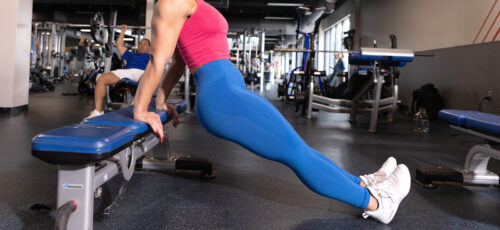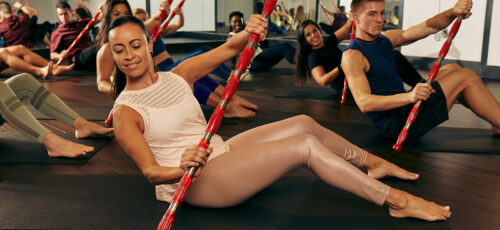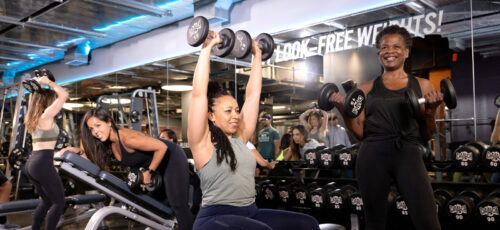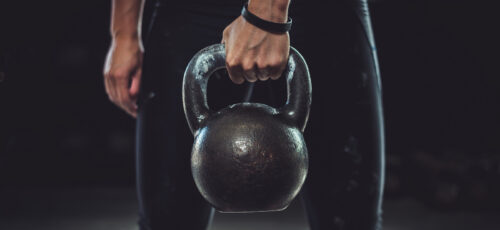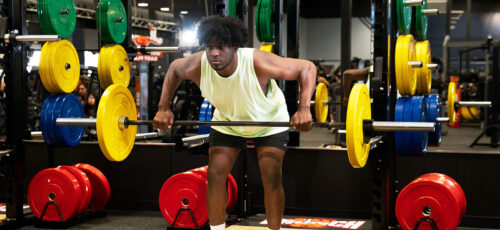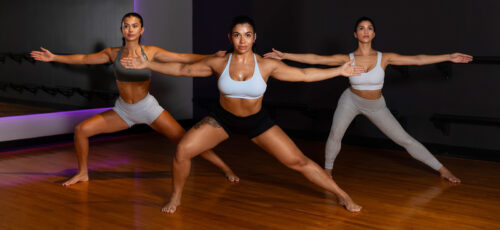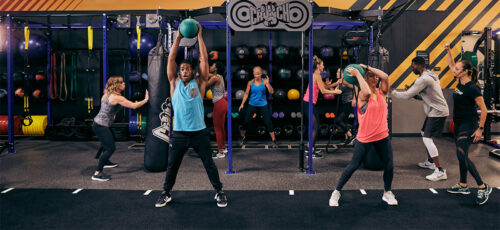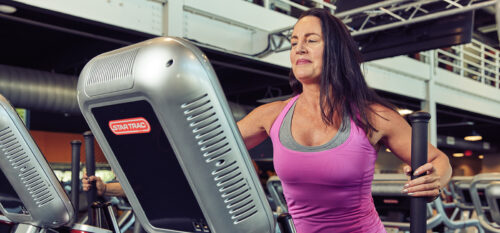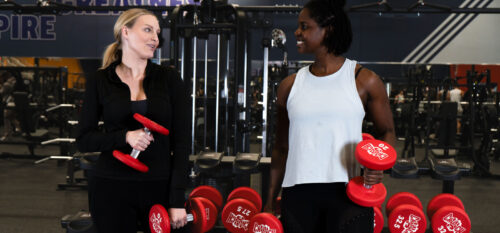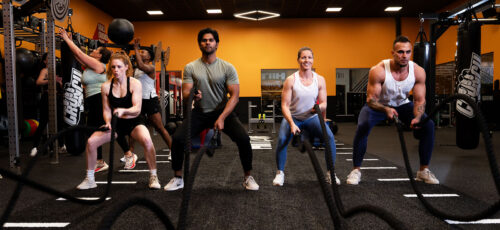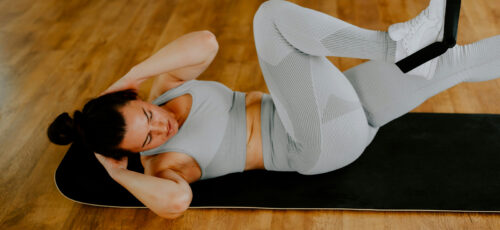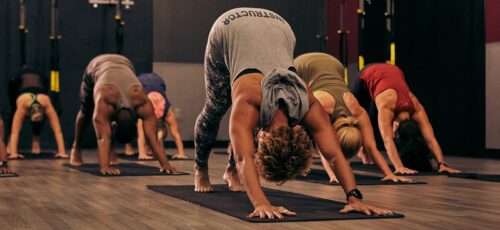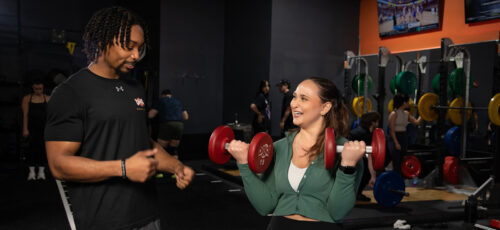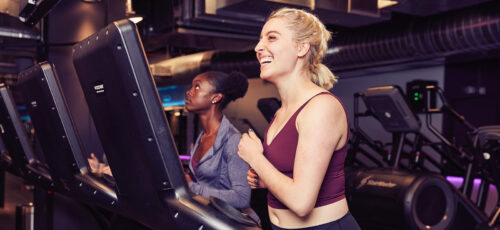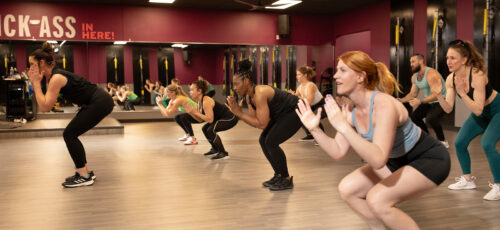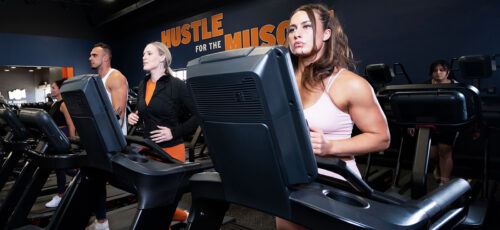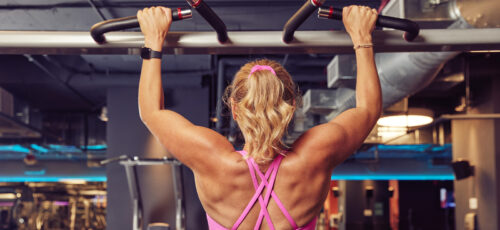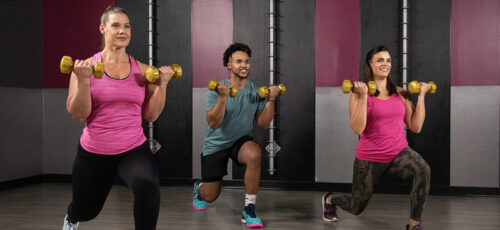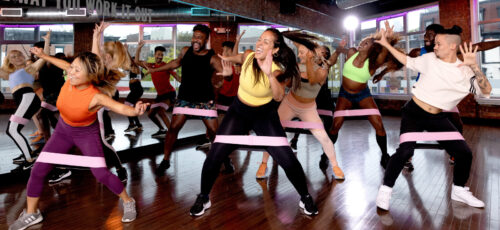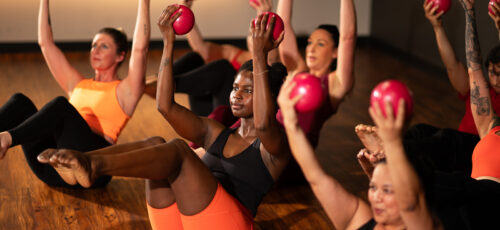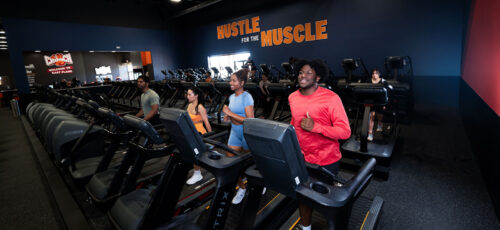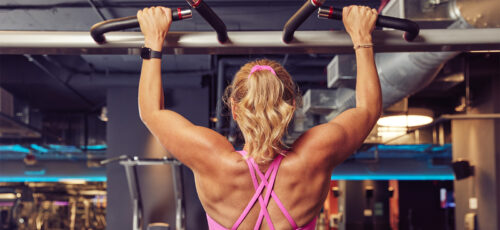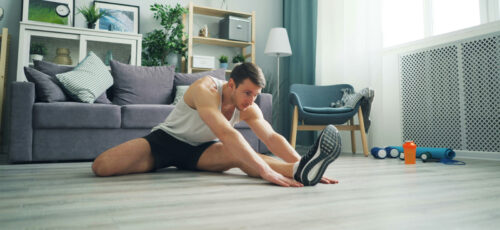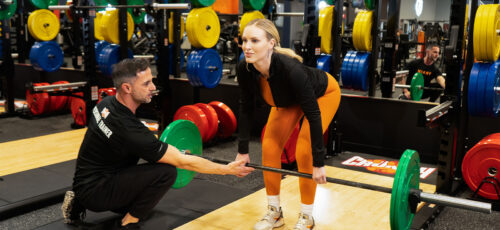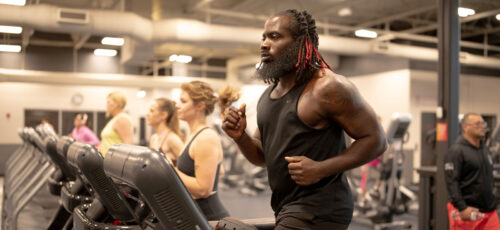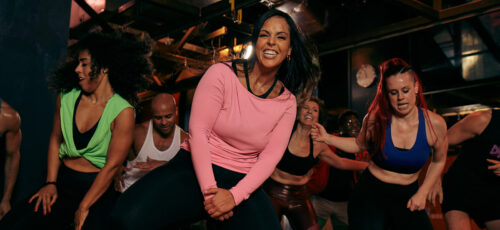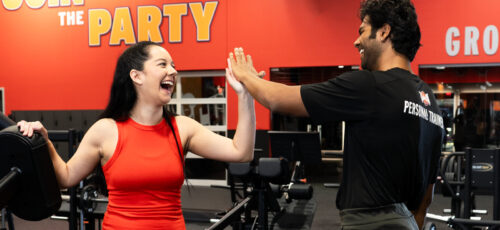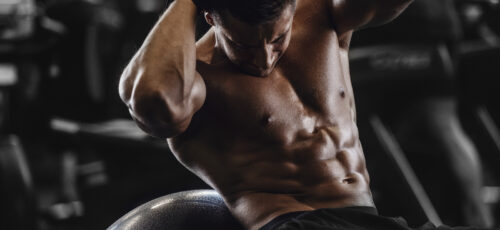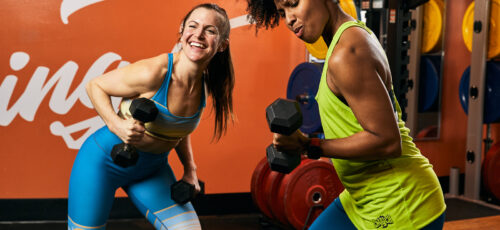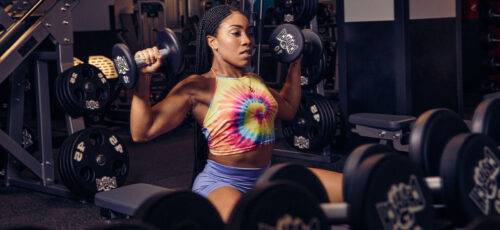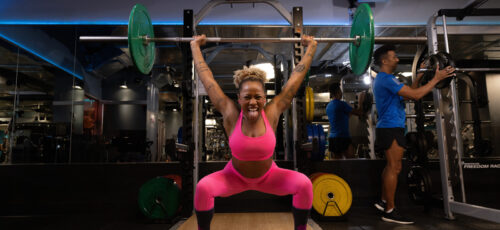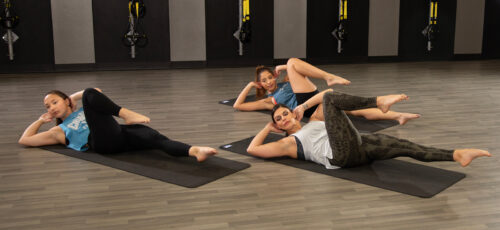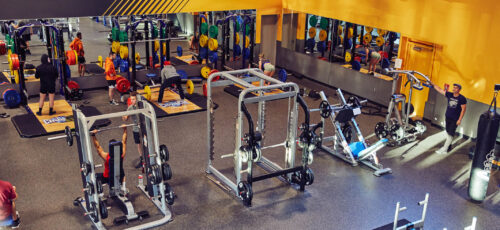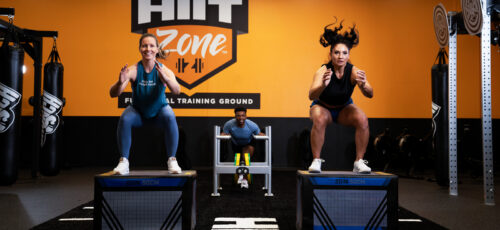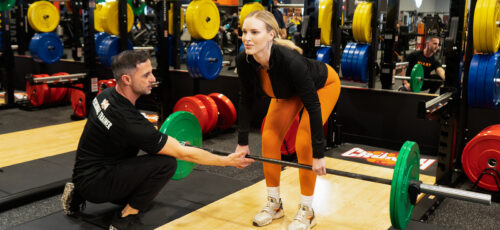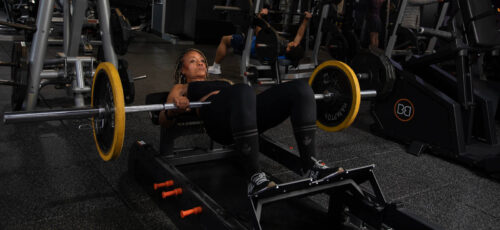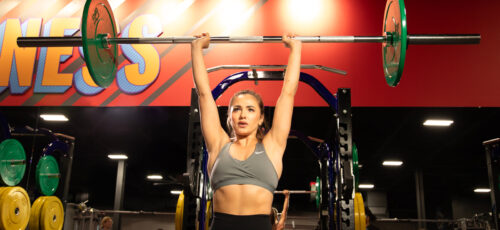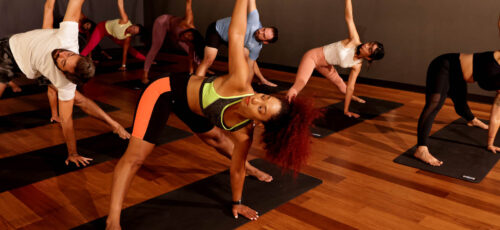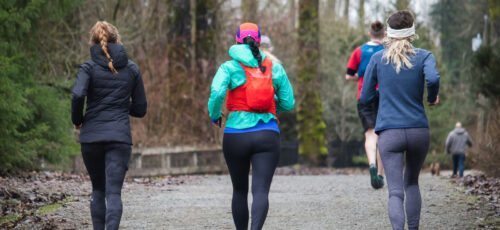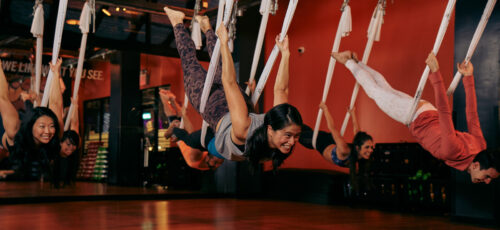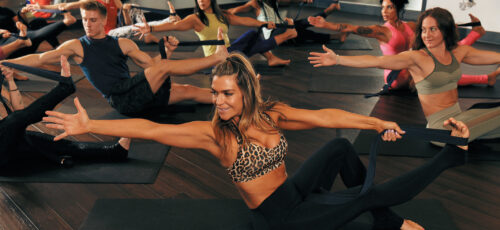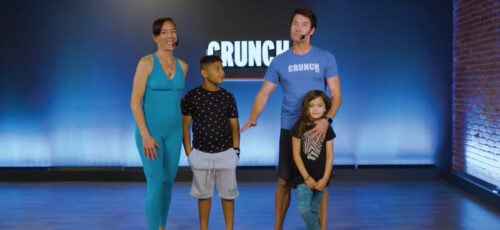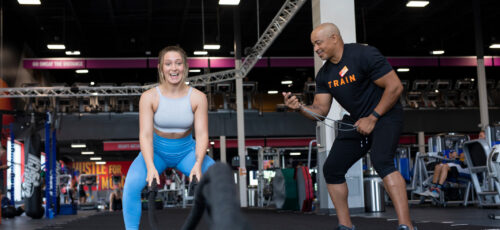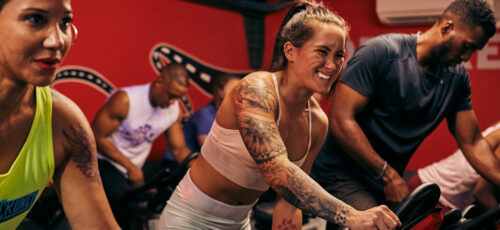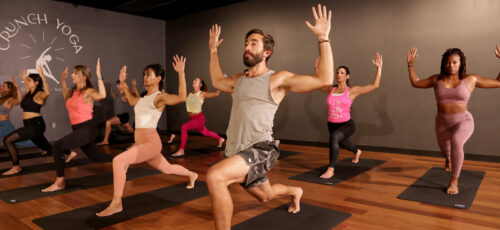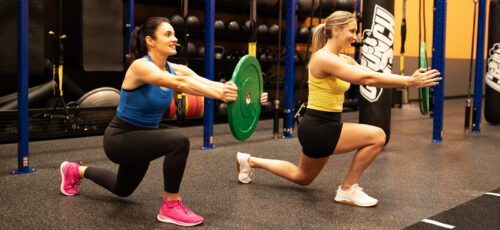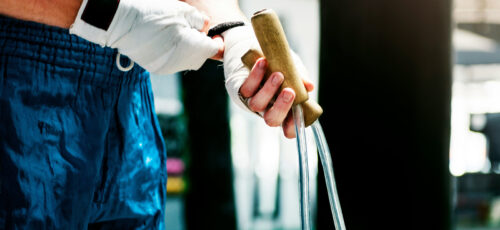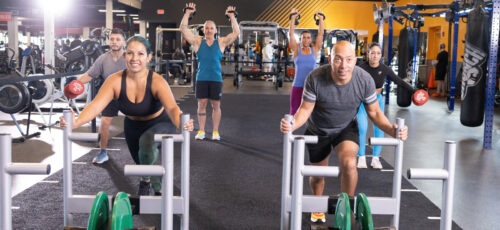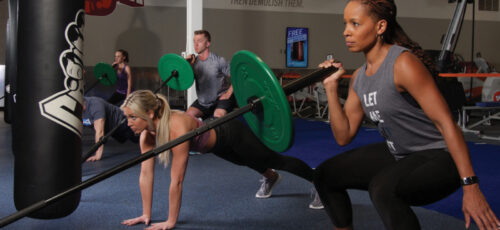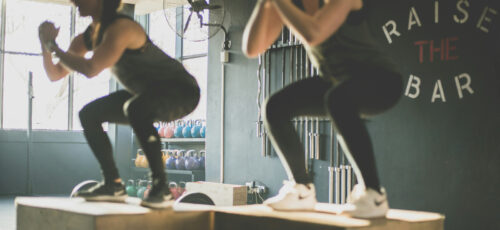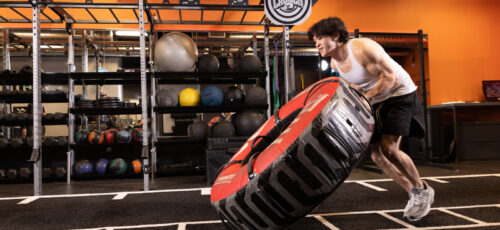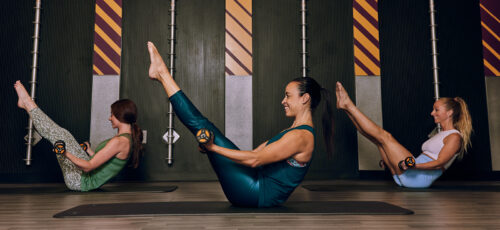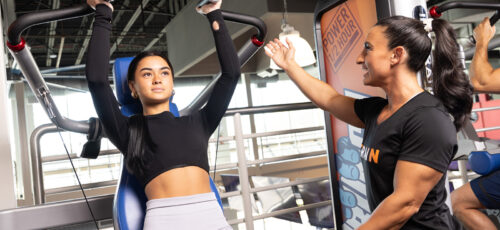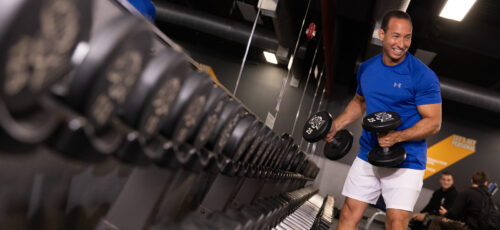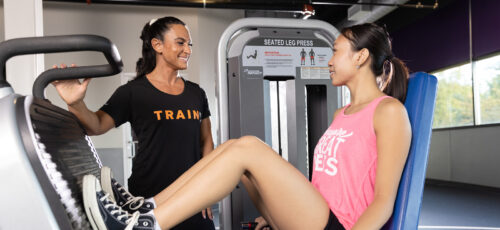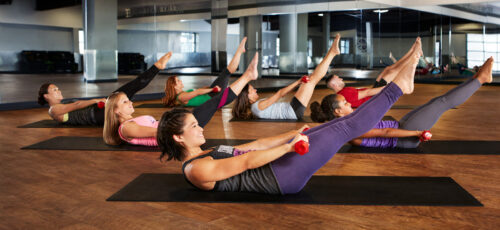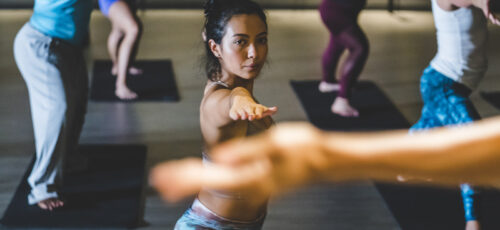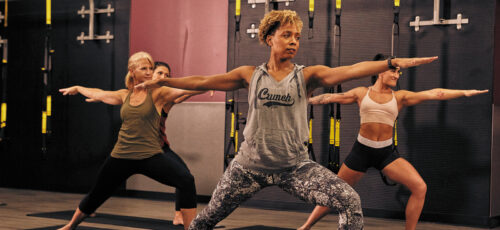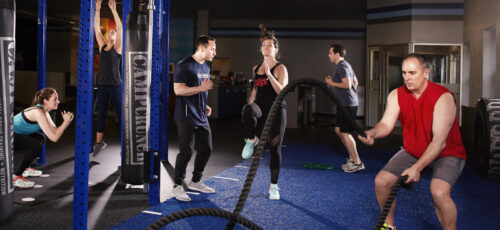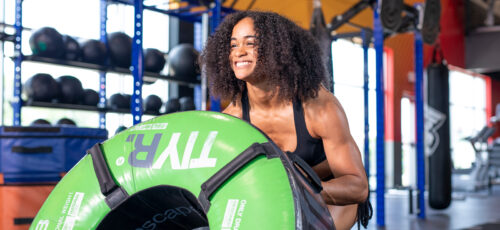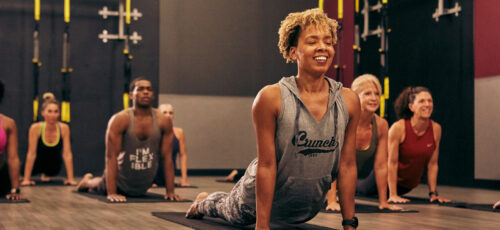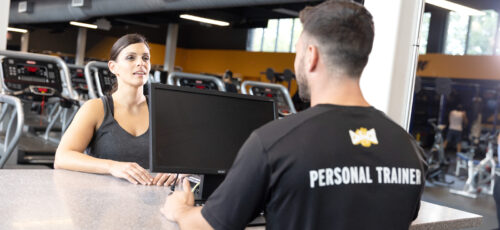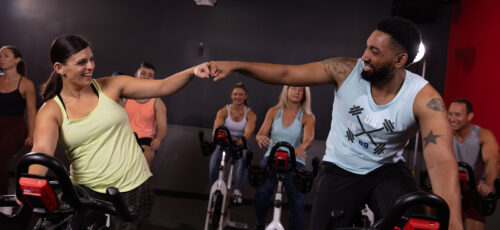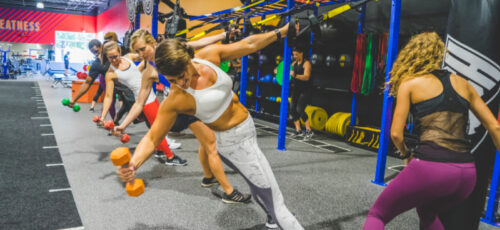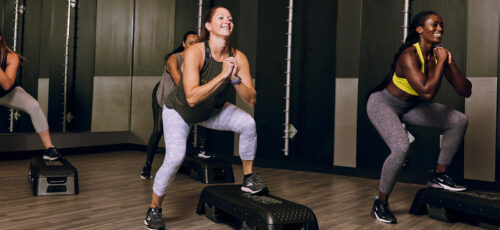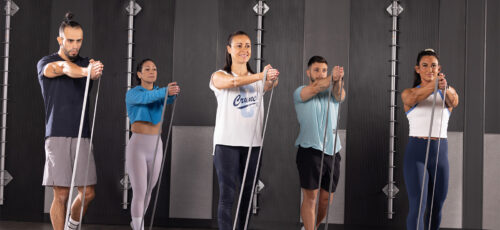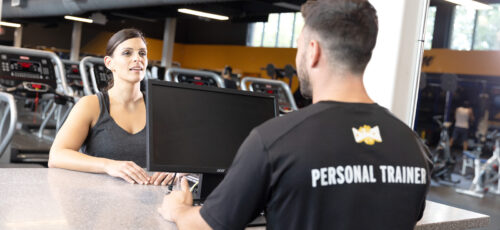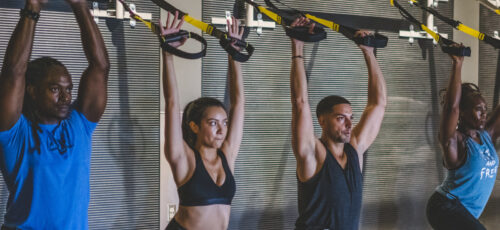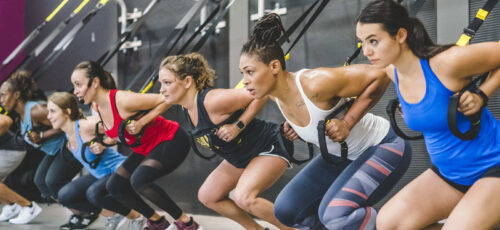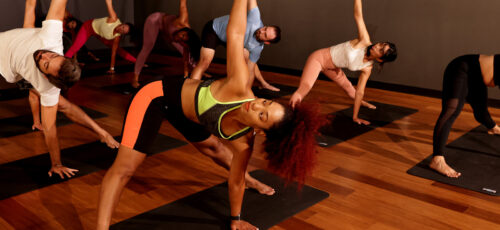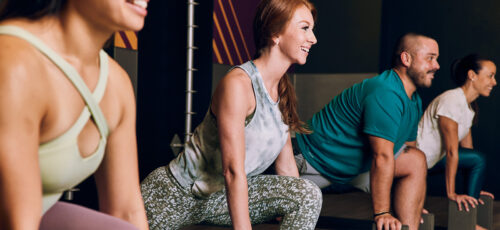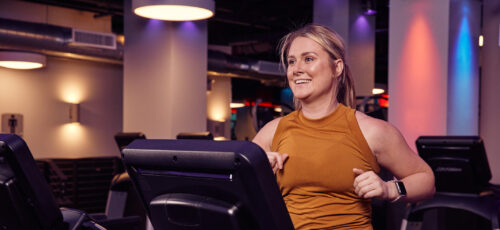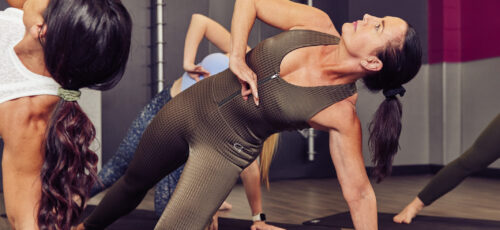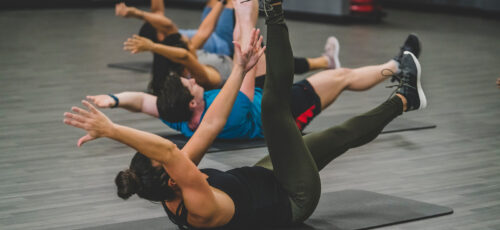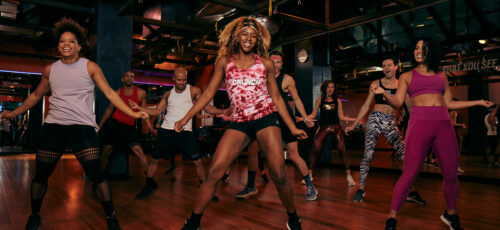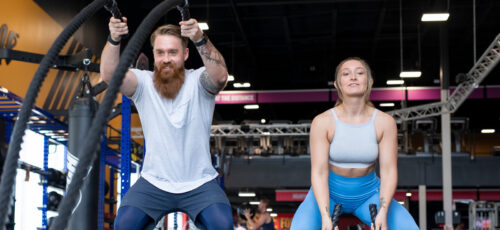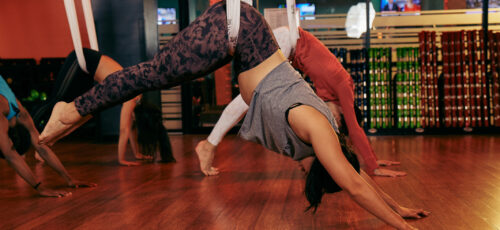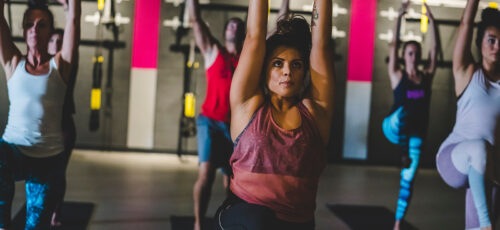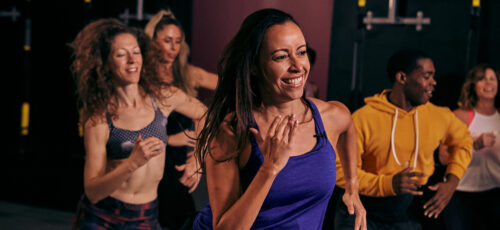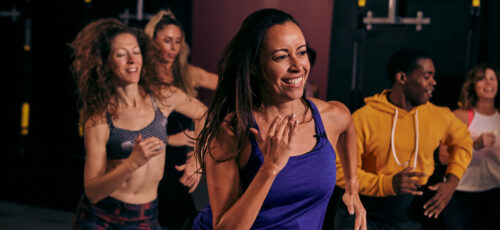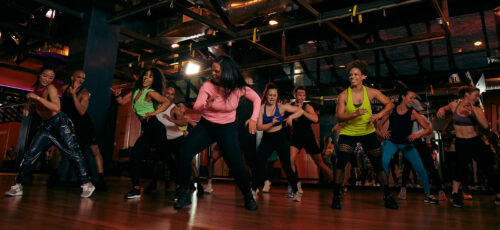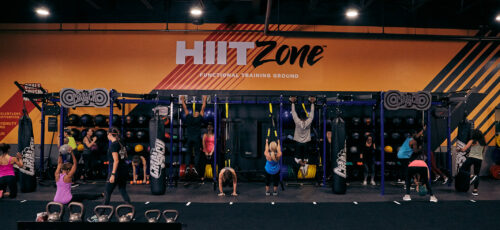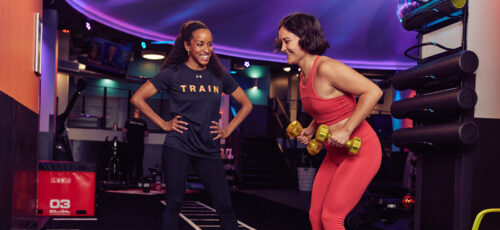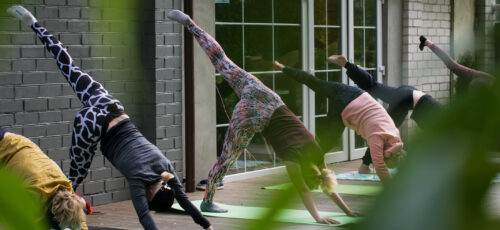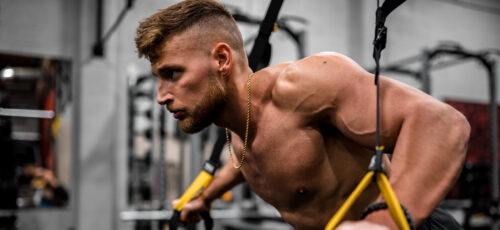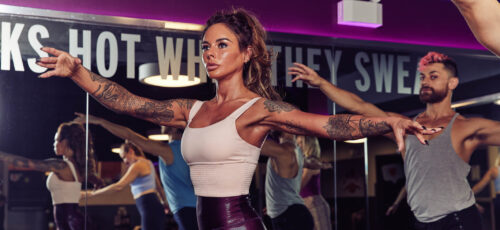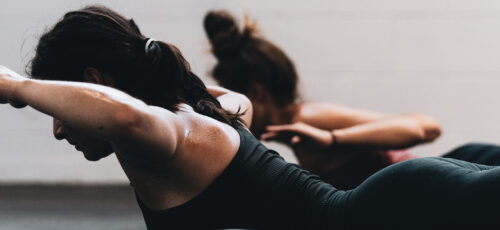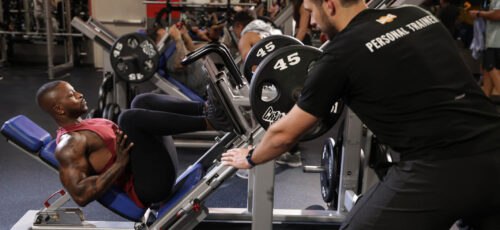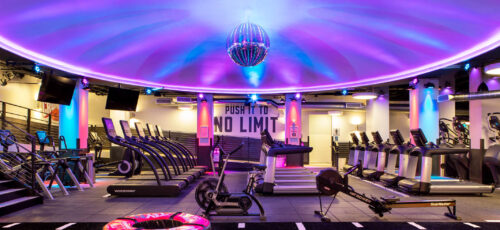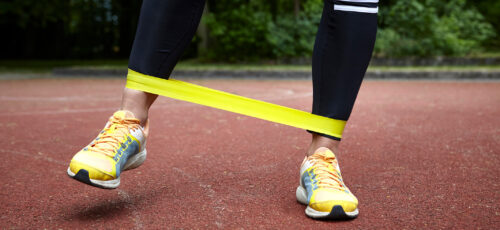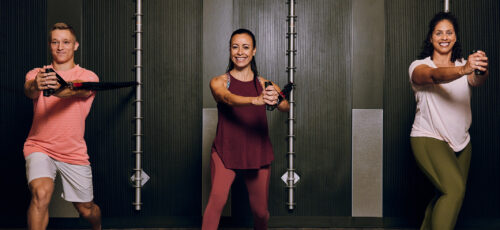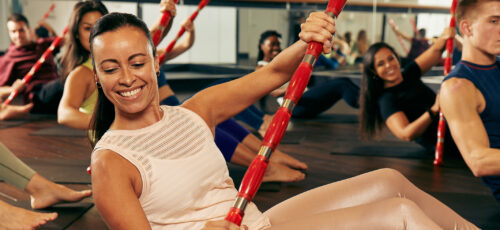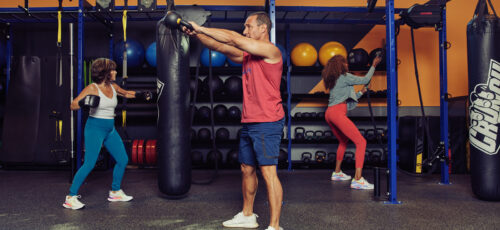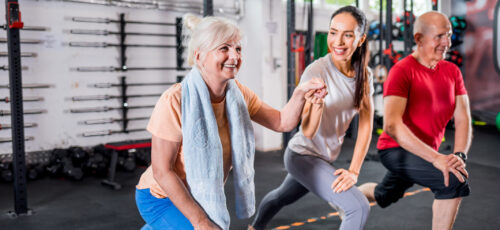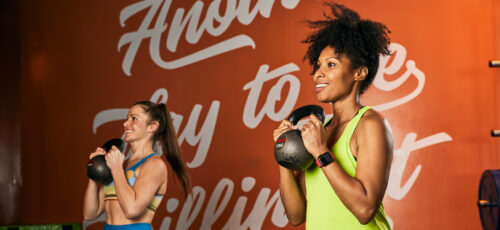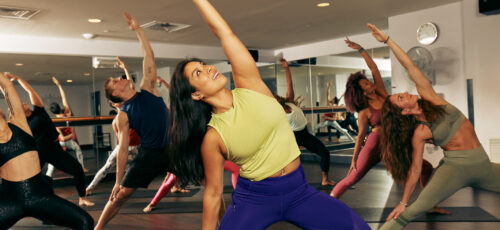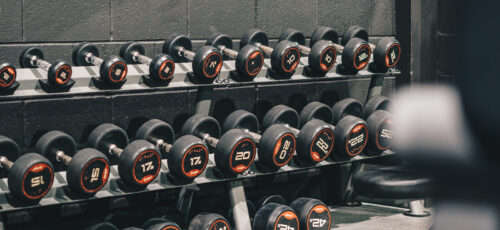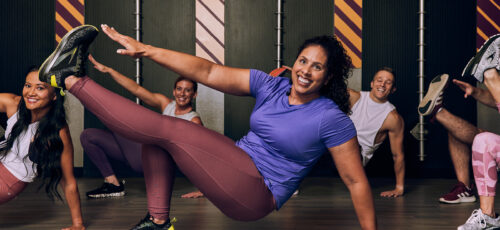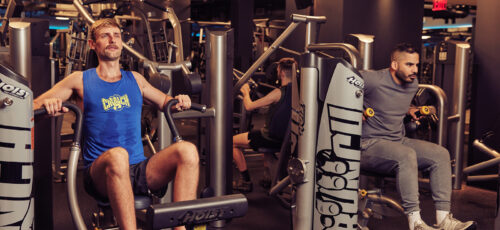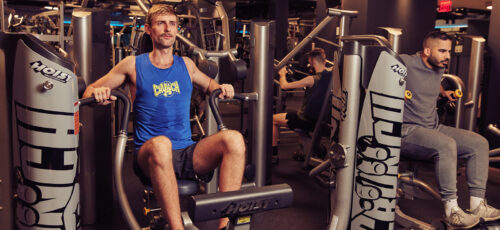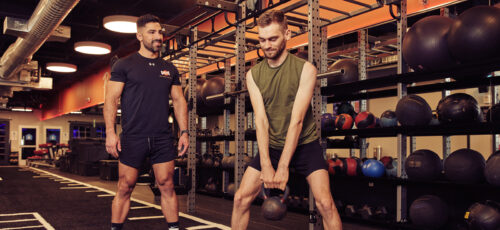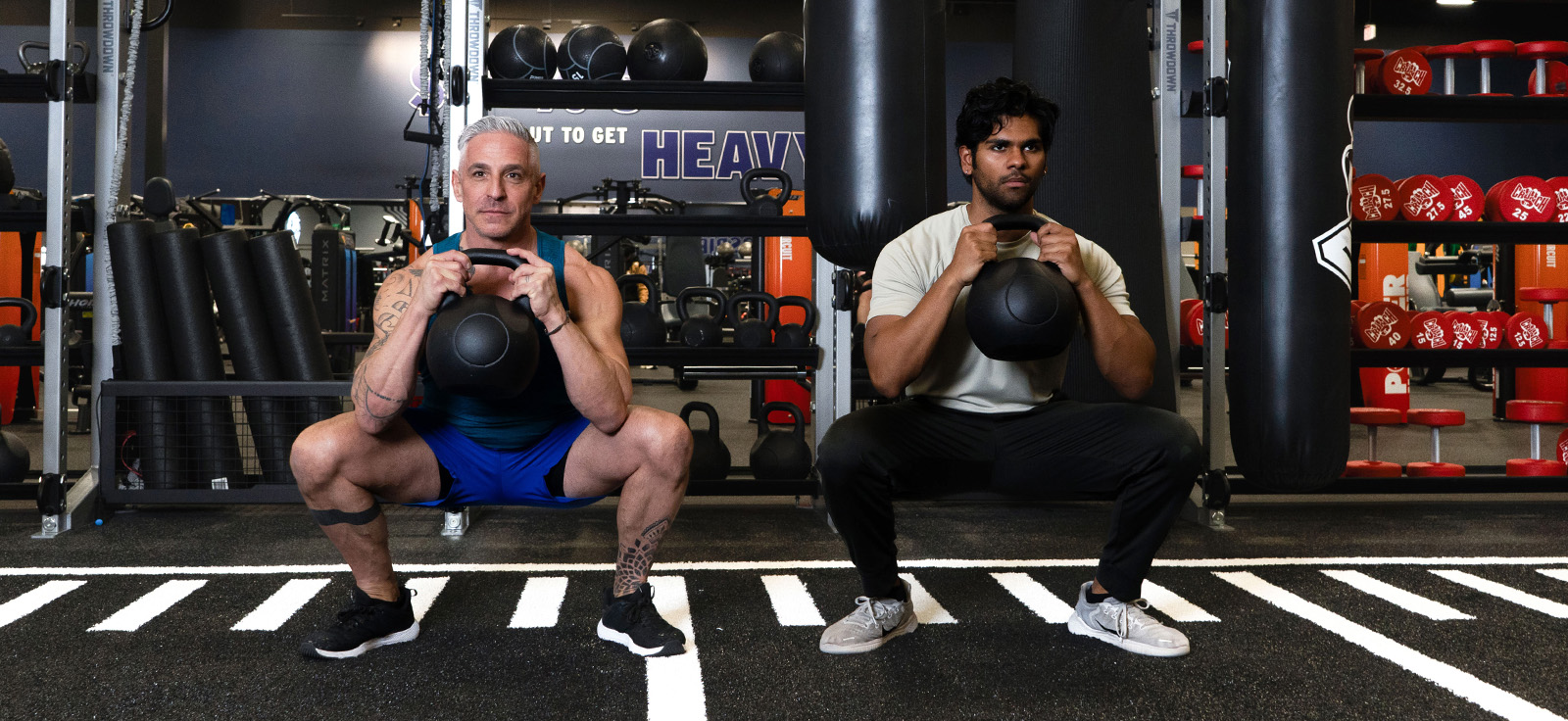
What Are the Best Hip Strength Exercises?
If your hips could talk, they’d probably say, “Hey, don’t forget about me!” Strong hips are the powerhouse behind nearly every movement, from walking to climbing stairs, lifting weights, and even just standing with good posture.
The best hip strength exercises don’t just target your gluteus maximus or hip flexors; they strengthen all the major muscle groups around the hip joint (gluteus medius, hip abductors, and stabilizers) to improve balance, mobility, and performance.
This article is designed for gym-goers looking to build hip strength and experience the benefits that come with strong hips; from better range of motion and reduced hip pain to smoother workouts and improved athletic performance.
You’ll find everything from gentle hip mobility and strength exercises to hip strengthening workouts for all levels.
Sure, you can take these tips and start on your own, but the fastest and safest way to see results is by working with a trained personal trainer.
A Crunch Fitness personal trainer can check your goals, experience, and any tight muscles or hip problems, then design a custom workout plan that fits your needs, whether you’re recovering from hip osteoarthritis or want a stronger lower body.
Ready to unlock your hip power? Keep reading to discover:
- Benefits of Strengthening Your Hips
- 8 Tips To Help Develop Stronger Hips
- Essential Hip Muscles and Their Functions
- Best Hip Strength Exercises for Beginners
- Intermediate & Advanced Hip Strength Workouts
- Modifications for Specific Goals or Conditions
Your hips will thank you; trust us!
Benefits of Strengthening Your Hip Muscles

Your hips are the silent heroes of your body, working nonstop to connect your upper and lower body, stabilize your spine, and keep your movement fluid. Whether you’re walking, squatting, or breaking into a victory dance, your hip joint plays a starring role in how well your body moves.
Here’s why hip strengthening deserves a front-row spot in your fitness routine:
- Better Balance & Stability: Strong hips improve your overall movement quality, making it easier to stay steady during workouts, and, let’s be real, even while carrying groceries up the stairs.
- Improved Posture: Strong hip muscles support the spine, helping reduce slouching and lower back pain. Your future self (and your chiropractor) will thank you.
- Reduced Injury Risk: Weak hips often cause compensatory movement patterns that put extra stress on your knees, lower back, and ankles. Strengthening them fixes the root problem, not just the symptoms.
- Enhanced Athletic Performance: Power for running, jumping, or lifting weights starts at the hips. The stronger they are, the more explosive your movements become.
- Pain Relief & Longevity: Proper hip strength can alleviate chronic pain and improve mobility as you age, helping you stay active and independent.
Whether you’re an athlete, a weekend warrior, or someone just trying to stand up without groaning, hip strengthening exercises are for you. Because when your hips are strong, your whole body thanks you.
Read our article: Strength Training Exercises You Can Do Every Day To Stay Fit
8 Tips To Help Develop Stronger Hips
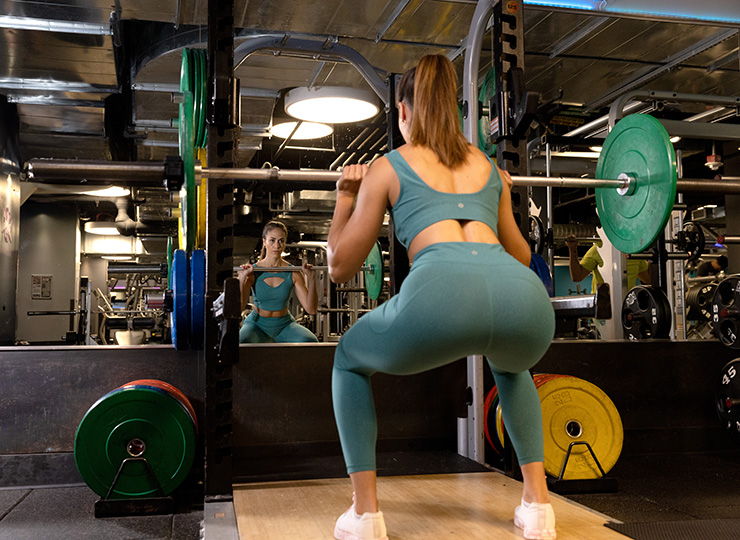
The best hip strength exercises can do wonders for your posture, balance, and overall power, but results don’t happen by accident. To truly build hip strength, you need a system.
The following tips will help you stay consistent, track progress, and prevent injuries while working toward stronger, more stable hips.
- Train 2–3 Times Per Week: Consistency is key. Your hip muscles need regular stimulation and proper recovery to grow stronger.
- Increase Difficulty Gradually: Use progressive overload by adding reps, resistance bands, or weights slowly to keep challenging your hips safely.
- Target All Muscles: Balance your routine with moves for hip flexors, glutes, and abductors to prevent imbalances.
- Prioritize Form: Quality beats quantity. Focus on alignment and control during every rep, and your knees and lower back will thank you.
- Warm Up & Cool Down: Gentle stretches and mobility drills prep your hip joints and reduce tightness afterward.
- Mix It Up: Alternate bodyweight, resistance band, and strength moves to avoid plateaus.
- Track Your Progress: Note your weights, reps, and flexibility gains to stay motivated.
- Get Professional Guidance: Crunch’s certified personal trainers can customize your plan for safe, fast, and effective hip strength results.
Essential Hip Muscles and Their Functions

Your hips are a complex network of muscle groups that work together to power movement, maintain balance, and keep your body stable. Understanding how these muscles function helps you train smarter and move more efficiently.
1. The Glutes (Gluteus Maximus, Medius, and Minimus)
The gluteus maximus is the powerhouse of your lower body. It’s the largest muscle and provides the driving force for running, climbing stairs, jumping, and standing up from a chair. Strong glutes protect your lower back and hip joint by creating stability and alignment during movement.
The gluteus medius and gluteus minimus work as your side stabilizers. They’re responsible for maintaining lateral stability, which is essential for preventing knee collapse when balancing on one leg or during single-leg exercises like step-ups or lunges. Without them, your gait can become unsteady and increase the risk of injury.
2. Hip Flexors
Located at the front of your hips, the hip flexors (including the iliopsoas and rectus femoris) lift your thigh toward your torso. They’re crucial for walking, running, and kicking, but are often tight in people who sit for long periods.
Weak or overactive hip flexors can lead to poor posture and lower back pain, so it’s important to balance strengthening with stretching.
3. Hip Adductors and Abductors
Your adductors (inner thigh muscles) pull the legs together, while your abductors (outer hip muscles) move them apart. Together, they create stability and control during side-to-side movements, helping you stay balanced while walking, turning, or performing athletic drills.
Building both groups evenly ensures proper hip alignment and prevents compensatory patterns that can stress the knees and ankles.
Read our article: What’s the Best Strength Training Gym?
Best Hip Strength Exercises for Beginners
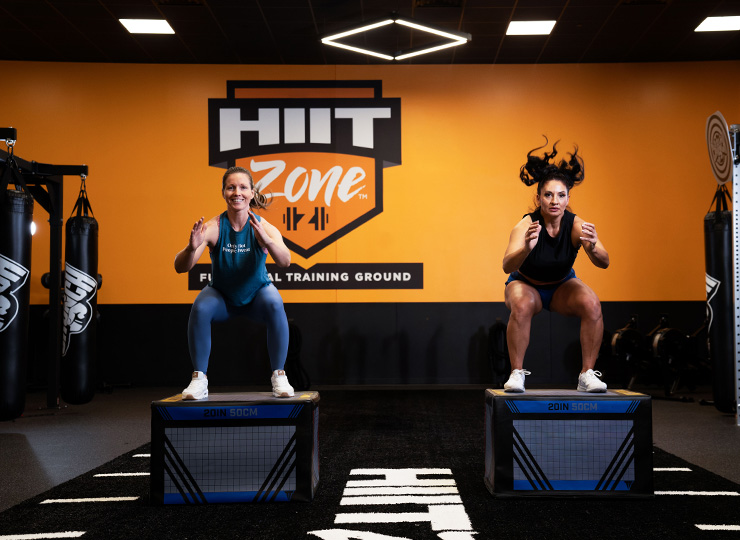
Getting started with hip strengthening doesn’t require heavy equipment; just commitment, consistency, and good form. These beginner-friendly exercises help you build stability, mobility, and control before progressing to more advanced moves.
Bodyweight Hip Strengthening Exercises
Bodyweight exercises are the foundation of any effective hip strength training routine. They teach you to move with control and improve your body’s range of motion, no gym required.
Bridges
- Lie on your back with your feet flat and knees bent.
- Then lift your hips to form a straight line from shoulders to knees.
- Engage your glutes at the top.
- Avoid arching your lower back; focus on squeezing, not swinging.
- Bridges build power in the gluteus maximus and improve spinal stability.
Clamshells
- Lie on your side with knees bent and feet stacked, keeping your feet hip-width apart.
- Open your top knee toward the ceiling while keeping your feet together, then slowly lower.
- This activates your gluteus medius, which stabilizes your hips and prevents knee collapse.
Wall Sits
- With your back flat against the wall, slide down until your knees are at 90 degrees.
- Keep your feet hip-width apart and hold for 20–30 seconds.
- It’s a killer move for your quads and glutes, and it helps train endurance in your lower body.
These moves build a strong foundation. Progress by adding reps, increasing hold times, or incorporating a resistance band around your thighs for extra challenge.
Resistance Band Hip Exercises
Resistance bands are small but mighty tools for hip mobility and strength exercises. They provide variable resistance, meaning your muscles work harder through the entire range of motion, perfect for safe, controlled strengthening.
Lateral Band Walks
- Place a resistance band around your thighs or ankles.
- Keep your feet hip-width apart, knees slightly bent, and step side-to-side.
- This fires up your hip abductors and gluteus medius, improving stability and control.
Clamshells with Bands
- Add a band just above your knees to make this classic move more challenging.
- It helps strengthen the outer hips and improve hip joint stability.
Standing Hip Abductions
- Anchor the band around one ankle and stand tall on the opposite foot.
- Lift your working leg out to the side, keeping it straight and controlled.
- This move enhances balance and lateral strength, key to athletic performance.
Resistance bands are portable, affordable, and versatile, making them ideal for home workouts or travel. Crunch Fitness locations offer various resistance band options and professional guidance to ensure proper form and technique.
Best Hip Exercises for Intermediate Levels
Once you’ve mastered the basics, it’s time to level up your hip strength workout. Intermediate hip muscle strengthening exercises demand more balance, coordination, and control.
These movements teach your body to move efficiently, helping you build strength, stability, and athletic grace. Think of it as teaching your hips to “adult.”
Single-Leg Exercises
Ready to test your balance? Single-leg exercises are among the best hip strength exercises because they isolate each side, exposing (and fixing) hidden weaknesses.
They also mimic real-world movements, because, let’s face it, we spend most of our lives on one leg at a time.
Single-Leg Deadlift
- Stand tall on one leg, hinge forward at the hips.
- Extend your opposite leg straight back until your torso and leg form a straight line.
- Keep your hips square and your back flat.
- This exercise for strong hips builds posterior chain strength while improving stability. Start by using a wall or chair for balance, then progress to bodyweight, dumbbells, or kettlebells.
Step-Ups
- Step onto a sturdy bench with one foot, drive through your heel, and lift your body up.
- Keep your knees aligned and your hips level.
- Step-ups are a functional hip strength training favorite.
- They translate perfectly to activities like climbing stairs or hiking.
Lateral Lunges
- Step to the side with one foot while keeping the other leg straight.
- Lower your hips back and down, then push off your bent leg to return.
- This movement strengthens your adductors and abductors while improving hip mobility and control.
Progress gradually: Start with assisted versions (holding onto a wall or TRX), move to full bodyweight, then add light weights for extra challenge.
These moves help build hip strength and symmetry, because strong, balanced hips mean fewer injuries and better performance.
Loaded Hip Exercises
Once you’ve built a solid foundation, adding resistance is key to continued growth. Loaded hip exercises introduce external weights (dumbbells, barbells, or machines) to apply progressive overload and stimulate deeper muscle adaptation.
Squats
The classic for a reason. Whether bodyweight or barbell, squats strengthen the glutes, hip flexors, and adductors. Keep your feet hip-width apart, chest up, and descend until your thighs are parallel to the floor.
Lunges
Perform forward, reverse, or walking lunges to target hip stability and coordination. Focus on controlled movement and proper knee alignment.
Hip Thrusts
Sit with your upper back against a bench, feet flat, and knees bent. Drive your hips upward, squeezing your gluteus maximus at the top. Add a barbell or dumbbell for extra resistance and incredible hip power.
At Crunch Fitness, you’ll find a full range of weights and machines to fine-tune your progression, from light dumbbells to heavy barbells. Remember: progress gradually, focus on form, and celebrate each strength milestone.
Read our article: What Equipment Does Crunch Fitness Provide?
Advanced Hip Strength Exercises
Once you’ve conquered the intermediate phase, it’s time to add some firepower to your hip strength training. Advanced exercises maximize hip power, stability, and mobility, ideal for athletes or anyone ready to take their fitness up a notch.
Plyometric Hip Exercises
Plyometrics (a.k.a “jump training”) are all about explosive energy. These hip mobility and strength exercises improve athletic performance by teaching your hips to generate power quickly and efficiently.
- Jump Squats: Perform a regular squat, then explode upward, landing softly with your knees bent. This move boosts hip flexion and power output.
- Lateral Bounds: Leap side-to-side from one leg to the other, landing softly to challenge your gluteus medius and hip abductors.
- Single-Leg Hops: Hop forward on one leg, maintaining stability as you land. This builds strength and resilience in your hip joints and surrounding muscle groups.
Start slow, make sure you have a solid strength base before jumping (literally) into plyos. Perform these on cushioned surfaces and prioritize landing control to reduce injury risk.
Multi-Plane Hip Exercises
Real life doesn’t happen in a straight line, nor should your workouts. Multi-plane hip exercises train your body to move efficiently in every direction, improving agility and functional strength.
- Curtsy Lunges: Step one leg diagonally behind the other and lower into a lunge. This targets the adductors, glutes, and core—plus, it’s great for balance and coordination.
- Rotational Squats: Rotate your torso as you rise from a squat to train your hips in a multi-directional range of motion.
- Multi-Directional Step-Ups: Alternate stepping forward, sideways, and backward onto a platform to enhance hip stability and control.
Hip Strengthening: Considerations & Modifications
When it comes to hip strength training, one size definitely doesn’t fit all. Different bodies, lifestyles, and goals require personalized approaches to stay safe and get results. For example:
- Athletes need sport-specific hip strength workouts that focus on power, stability, and agility. Think explosive hip thrusts, single-leg deadlifts, and plyometric movements to boost performance.
- Office workers, on the other hand, often deal with tight hip flexors and weak glutes from long hours sitting. Their routines should emphasize mobility, stretching, and activation drills to restore balance and alignment.
- Older adults benefit from gentle hip mobility and strength exercises (like bridges, step-ups, or banded walks) that support joint stability and independence.
- Injury recovery requires caution. For those with hip arthritis, previous hip surgery, or chronic lower back pain, modifications such as reduced range of motion, slower tempos, or seated variations help strengthen safely.
Each person’s path to building hip strength is unique. That’s where Crunch’s personal trainers come in; they’ll assess your needs, teach proper form, and modify exercises so you can keep getting stronger while minimizing injury risk.
Are Hip Exercises Necessary for Everyone?
Absolutely! No matter your age, fitness level, or lifestyle, hip strengthening exercises are essential for maintaining mobility, stability, and overall strength. In today’s world of endless sitting (at desks, in cars, or on couches), our hips often become weak and tight, leading to poor posture, back pain, and limited range of motion.
Different groups have different needs: athletes use hip strength workouts to boost power and performance, while older adults focus on exercises that improve balance and help prevent falls.
Even if you’re not dealing with hip pain, incorporating hip muscle strengthening can keep your joints healthy and prevent problems down the road.
How Long Does It Take to Build Hip Strength?
Consistency is everything. Most people feel initial improvements, like better stability or reduced discomfort, after about 2–4 weeks of training. Evident gains in hip strength and movement control typically develop around 6–8 weeks.
Your progress depends on factors like training frequency, age, and injury history. Keep in mind, maintaining strength requires ongoing effort; if you stop training, your muscles will gradually weaken. Crunch trainers can design a realistic plan tailored to your starting point and long-term goals.
Join Us!
Crunch promotes a culture of positivity, inclusivity, and fun with no judgments by providing an environment for all individuals regardless of their health and fitness goals. Find a Crunch gym near you to try our free trial membership, or join Crunch now. We’re here for you – at the gym or at home. Access the best live & on-demand workouts anytime, anywhere with Crunch+. Ready to get sweaty? Try hundreds of workouts for free! Start your free trial now!
FAQ’s
How Often Should I Do Hip Strengthening Exercises?
For best results, aim to do hip strengthening exercises 2–3 times per week. This gives your muscles enough time to recover and grow stronger between sessions. Beginners can start with shorter workouts and gradually increase intensity. Want to build a complete lower-body plan? Check out Crunch’s strength training workouts.
Can Hip Exercises Help With Lower Back Pain?
Yes! Strengthening your hip muscles can reduce strain on your lower back by improving posture, alignment, and movement control. Weak or tight hips often cause the back to compensate, leading to discomfort.
Strengthening your glutes and hip flexors helps stabilize your spine. Learn more about core and hip workouts by viewing our group fitness classes.
Should I Feel Sore After Hip Strengthening Exercises?
A little muscle soreness, especially if you’re new to hip strength training, is normal and shows your muscles are adapting. However, sharp or lingering pain isn’t.
Make sure to stretch, hydrate, and rest between workouts. If soreness lasts more than a few days, consult a Crunch personal trainer for form and recovery tips.
Can I Do Hip Exercises If I Have Hip Arthritis?
Absolutely, but with care. Gentle hip mobility and strength exercises can actually reduce stiffness and improve function. Focus on low-impact moves like bridges or seated leg raises.
Avoid high-impact or deep-range exercises that cause discomfort. A Crunch certified trainer can help modify exercises safely for your needs.
How Do I Know If I’m Doing Hip Exercises Correctly?
Good form is key! Watch your alignment; your knees, hips, and feet should stay in line throughout each movement. Move slowly and avoid arching your lower back.
If you’re unsure, ask a Crunch personal trainer for feedback or attend a small-group training session where form correction is part of the workout.
What’s The Difference Between Hip Flexibility And Hip Strength?
Hip flexibility is about how far your hips can move (your range of motion), while hip strength refers to how much power your muscles can generate through that motion.
Both are essential: flexibility allows free movement, and strength gives control and stability. Explore mobility and strength-focused classes at Crunch Fitness to improve both.












